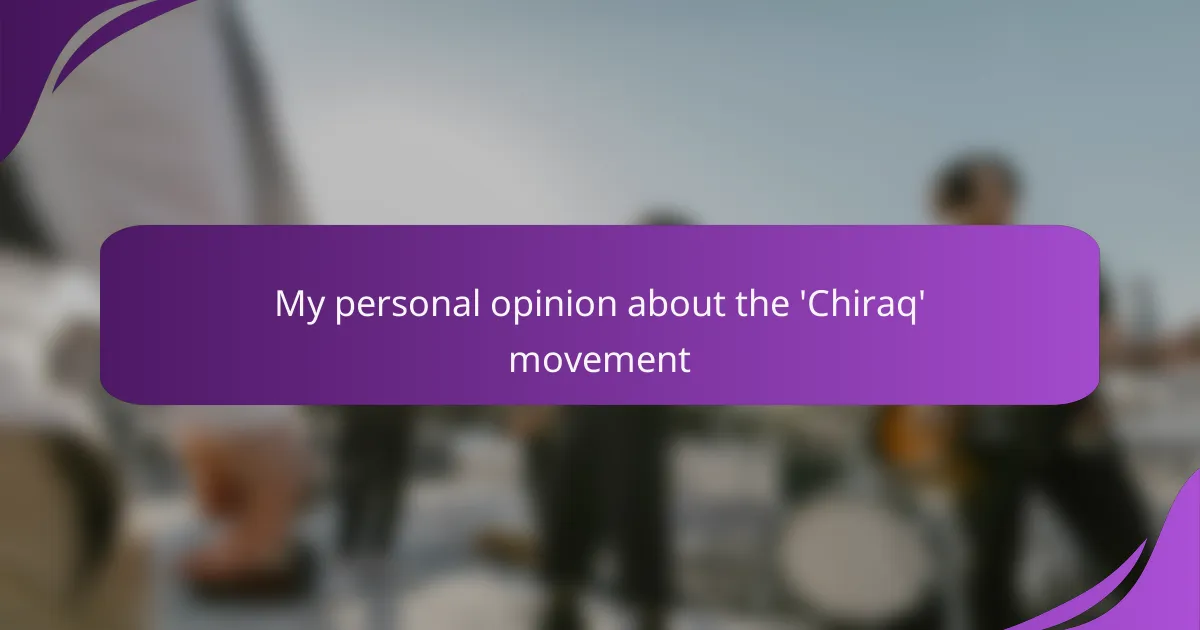Key takeaways
- Chicago rap reflects the city’s culture and struggles, showcasing resilience through powerful storytelling.
- The Chiraq movement raises awareness of social issues and encourages dialogue about violence, poverty, and inequality.
- Key artists like Chief Keef, Lil Durk, and G Herbo bring raw authenticity to their narratives, connecting deeply with their audience.
- The movement has significantly influenced hip hop, changing the conversation around community and identity while highlighting survival and adversity.

Overview of Chicago rap music
Chicago rap music is more than just a genre; it’s a reflection of the city’s vibrant culture and its struggles. The raw storytelling within the lyrics often portrays the realities of life in neighborhoods, highlighting both the challenges and the resilience of the community. I find myself moved every time I hear a track that encapsulates a personal narrative, making me wonder how many others share similar experiences.
Over the years, Chicago has birthed numerous influential artists who have shaped not only local sound but also the national rap scene. From the lyrical prowess of Common to the unique style of Chance the Rapper, each artist contributes layers to a diverse musical tapestry. Listening to their stories inspires me to think about how art can serve as a voice for those often unheard.
The Chi-Raq movement, which emphasizes the issues within the community through music, showcases the power of expression in the face of adversity. It’s fascinating how artists use their platforms to discuss social justice and bring awareness to critical issues. I ask myself, how has the music changed the conversation in Chicago? The answer lies in the boldness and authenticity of the voices that emerge from this vibrant city.
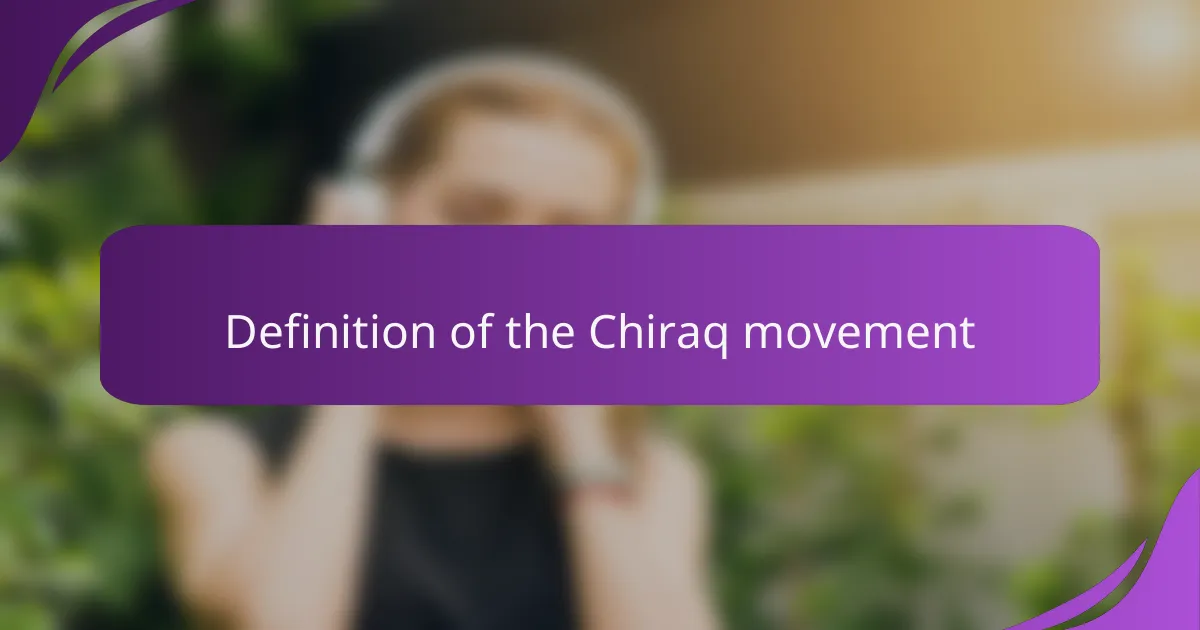
Definition of the Chiraq movement
The Chiraq movement refers to a cultural and musical response to the violence and social issues in Chicago, a name that blends “Chicago” with “Iraq” to illustrate the severity of the city’s struggles. From my perspective, this term captures more than just a geographical identity; it symbolizes a call for awareness and change amidst systemic hardships. Reflecting on this, I can’t help but feel a mix of concern and hope for the community.
In my experience, artists involved in the Chiraq movement often use their music as a platform for storytelling, shedding light on the day-to-day realities faced by many. I remember listening to one particular track that described life on the streets—the rawness of the lyrics really hit home. It made me realize how important it is for these artists to voice their truths and experiences, forging a deeper connection with their audience.
Furthermore, the movement emphasizes the need for dialogue about gang violence, poverty, and racial inequality. I find myself pondering how art can serve as both a mirror and a catalyst for change. When I hear these powerful narratives, I can’t help but wonder if they contribute to a broader understanding and maybe even inspire a generation to strive for better paths.
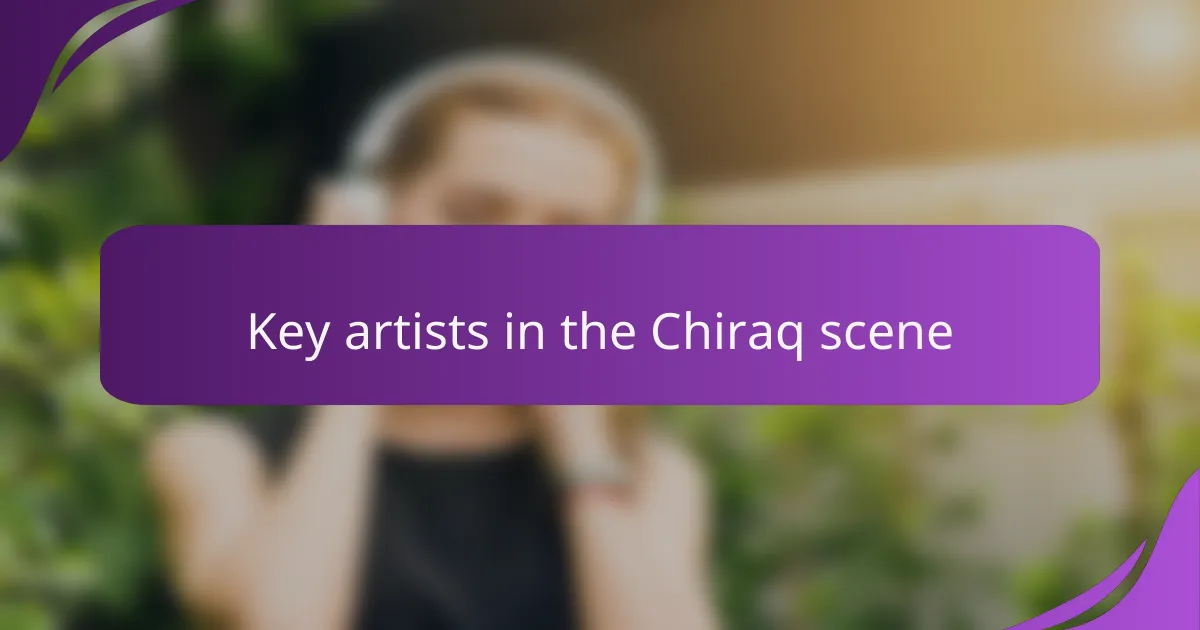
Key artists in the Chiraq scene
Certainly! The Chiraq scene has introduced some incredibly talented artists who showcase the raw and gritty reality of life in Chicago. Artists like Chief Keef, who is often credited with popularizing the genre, utilize their personal experiences to craft powerful narratives. His hit “I Don’t Like” became an anthem of sorts and really highlighted the struggles youth face in Chicago.
Another notable figure is Lil Durk, whose emotional storytelling resonates with many. He often discusses themes of loss and resilience, drawing from his life experiences. When I listen to his tracks, I can feel the weight of his words, as they capture a slice of life that many may not understand.
Lastly, we can’t overlook the contribution of G Herbo, whose lyrical depth often reflects his upbringing in the city. His song “Survivor’s Remorse” struck a chord with me; it’s a poignant reminder of the battles he faced and overcame. Each of these artists brings a unique voice and perspective to the Chiraq movement, making it rich and diverse.
| Artist | Notable Track |
|---|---|
| Chief Keef | I Don’t Like |
| Lil Durk | Porland |
| G Herbo | Survivor’s Remorse |
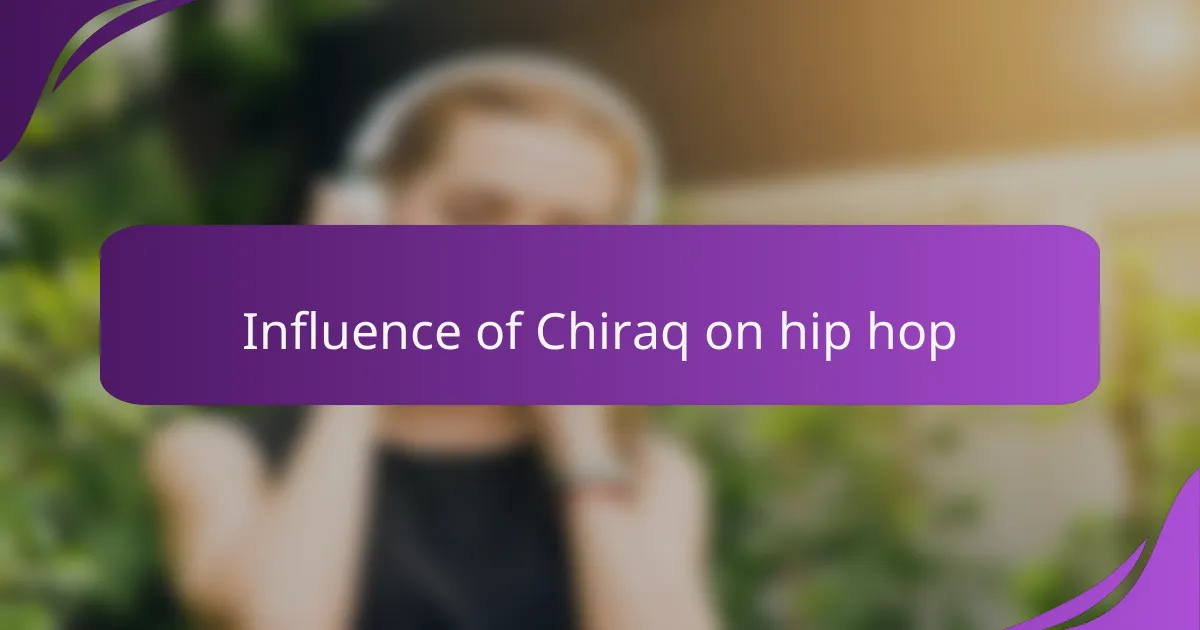
Influence of Chiraq on hip hop
The Chiraq movement has significantly influenced hip hop by bringing real stories of struggle and resilience to the forefront. Artists from Chicago have utilized their music as a vehicle to express the harsh realities of life in their neighborhoods, which resonates deeply with listeners. I remember the first time I heard a track that encapsulated the pain and hope of the community; it was a wake-up call that changed my perspective on the genre.
What’s fascinating is how this movement sparked a broader conversation about violence, community, and identity not just in Chicago but across the nation. Hearing these artists share their experiences inspires empathy and awareness, prompting many to look beyond the music and seek to understand the narrative that shapes it. I often find myself reflecting on how powerful art can be in driving social change and connecting people from different walks of life.
Here’s a comparison of the themes typically found in Chiraq hip hop versus mainstream hip hop:
| Chiraq Hip Hop | Mainstream Hip Hop |
|---|---|
| Focuses on violence and survival | Often centers on luxury and success |
| Raw, authentic storytelling | Polished production with commercial appeal |
| Community and neighborhood bonds | Individualism and personal journeys |

My perspective on Chiraq lyrics
When I listen to Chiraq lyrics, I’m struck by their raw authenticity. The emotions conveyed in the music often reflect the harsh realities of life in Chicago, which many artists feel compelled to share. I remember hearing a track that vividly described the struggles and triumphs of my neighborhood, making it impossible not to connect with the artist on a deeper level.
The storytelling aspect of Chiraq lyrics resonates with me; each verse serves as a window into experiences that many are unfamiliar with. It’s a blend of pride and pain that I find incredibly powerful. I think it’s essential that we appreciate the socio-economic backdrop that shapes these narratives, as they provide context for the artists’ perspectives.
In terms of lyrical themes, I often notice a focus on survival, community, and the impacts of violence. This duality—celebrating life while confronting its challenges—adds depth to the music that goes beyond mere entertainment.
| Lyric Theme | Emotional Insight |
|---|---|
| Survival | The struggle to stay safe and succeed. |
| Community | The bonds formed in adversity. |
| Violence | A harsh reflection of reality. |
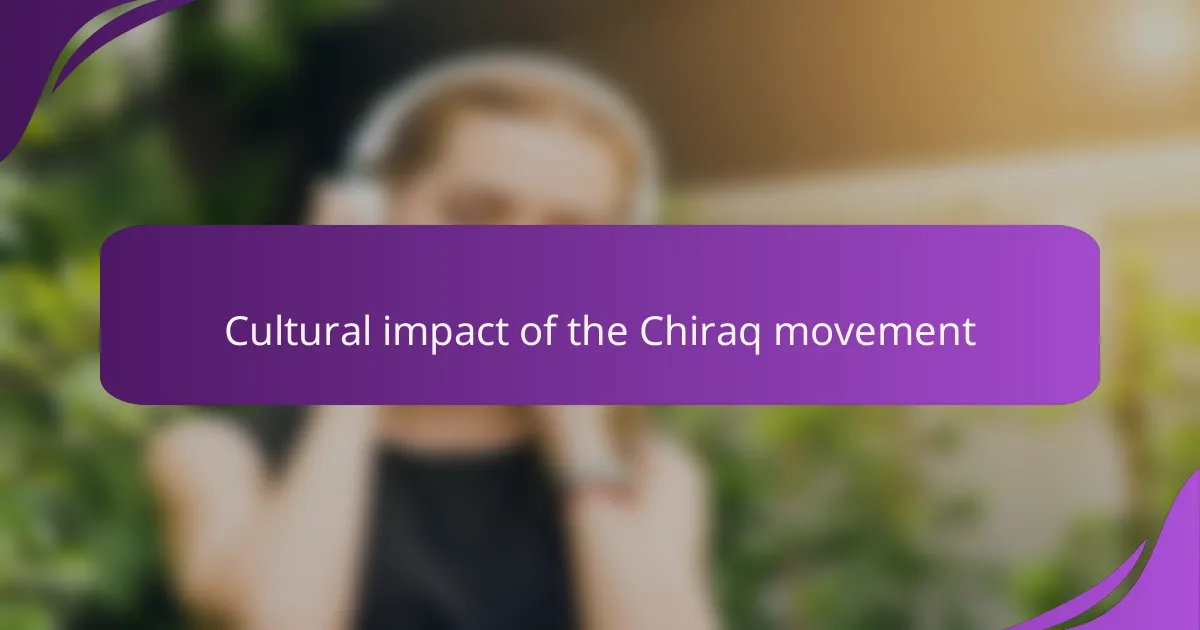
Cultural impact of the Chiraq movement
The cultural impact of the Chiraq movement is profound and multifaceted. From my perspective, it has brought attention to the harsh realities of life in some Chicago neighborhoods, using music as a platform for storytelling. I remember hearing artists like Chief Keef and Lil Durk vividly describe their experiences; it felt raw and real, resonating with many who share those struggles.
Moreover, the movement has ignited conversations about violence, youth culture, and community resilience. I’ve seen how it fosters a sense of identity among listeners, particularly the young generation who feel connected to these narratives. It’s not just music; it’s a voice for the unheard, and that emotional connection makes it particularly powerful.
“`html
| Aspect | Chiraq Movement Impact |
|---|---|
| Creation of Awareness | Highlights social issues and violence in Chicago |
| Identity Formation | Fosters a sense of belonging among youth |
| Artistic Expression | Transforms personal experiences into relatable music |
“`
